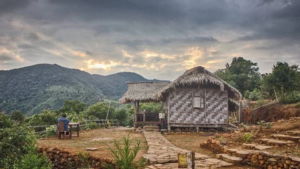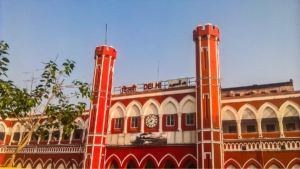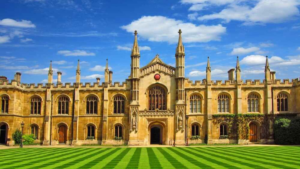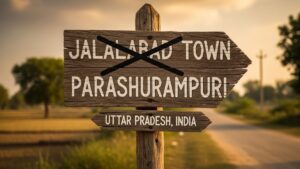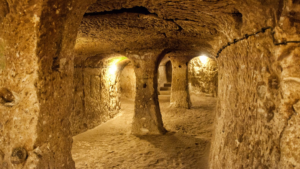Adda247 is a trusted platform dedicated to helping students prepare for various competitive exams, including Bank, SSC, UPSC, Railways, and Insurance. It provides a wide range of resources to keep aspirants informed and ready for success. These resources include daily updates on current affairs, monthly PDF capsules, and the latest news, ensuring you stay up-to-date with important national and international events.
Staying informed about current events is essential for boosting your general knowledge, which plays a crucial role in improving your performance in competitive exams. Adda247 makes this easier by providing reliable and easily accessible information tailored for government exam preparation.
Today’s Latest Current Affairs
- Madras Day 2025: History, Significance, Celebrations, and Interesting Facts About ChennaiAugust 22, 2025Madras Day, observed every year on August 22, celebrates the founding of Chennai (formerly Madras), one of ...
- Which Indian Village is Known as the Whistling Village of India?August 21, 2025India is a land of diverse cultures, traditions, and hidden gems. Among its many unique places, there ...
- Monthly Current Affairs PDF – July 2025August 21, 2025Welcome to the July 2025 edition of the Monthly Current Affairs PDF – your comprehensive monthly guide ...
- Which Railway Station is Known as the Entry Gate of Northern India?August 21, 2025India has one of the largest railway networks in the world, connecting millions of passengers to every ...
- Which Two Countries of the World Have No University?August 21, 2025Education plays a vital role in the growth and development of any country, and most nations have ...
- Top-5 Countries with the Most Hydrogen-Powered TrainsAugust 21, 2025Trains are a major mode of transport across the globe. To cut down pollution and promote clean ...
- Which is the Most Colorful Flag in the World? Check the List of Top-10 Colorful FlagsAugust 21, 2025Flags are powerful symbols that represent the identity, culture, and history of a country. While many national ...
- Jalalabad Renamed Parashurampuri: Centre Approves Name Change Honouring Lord ParashuramAugust 21, 2025In a move reflecting cultural and religious sentiment, the Union Ministry of Home Affairs has officially approved ...
- Top-7 Cities that are Built Entirely Underground, Check the ListAugust 21, 2025Most people imagine cities filled with tall buildings and busy roads, but some of the world’s most ...
- India, Saudi Arabia Form Joint Working Group to Deepen Maritime CooperationAugust 21, 2025In a significant move to strengthen strategic ties, India and Saudi Arabia have agreed to enhance maritime ...
General Studies
- Which Indian Village is Known as the Whistling Village of India? August 21, 2025
- Which Railway Station is Known as the Entry Gate of Northern India? August 21, 2025
- Top-5 Richest Actress in India by 2025, Know the Names August 21, 2025
- Top-10 Biggest Countries of Africa, Check the List August 21, 2025
- Top-10 Biggest Fishes in the World, Check the List August 21, 2025
- Top-10 Longest Beaches in the World by 2025, Check the List August 21, 2025
Important Days 2025
- Madras Day 2025: History, Significance, Celebrations, and Interesting Facts About Chennai August 22, 2025
- International Day of Remembrance and Tribute to the Victims of Terrorism 2025: United by Hope and Solidarity August 21, 2025
- World Senior Citizens’ Day 2025: Why It’s Vital to Serve Our Elders with Dignity and Respect August 21, 2025
- World Entrepreneurs’ Day 2025: Celebrating Innovation, Courage, and Economic Impact August 21, 2025
- Sadbhavana Diwas 2025: Celebrating Peace, Unity, and Communal Harmony in India August 20, 2025
- Akshay Urja Day 2025 – History, Significance, and Celebrations August 20, 2025
Latest Current Affairs 2025
Staying updated with current affairs from Adda247 can significantly enhance your general awareness and give you a competitive edge in exams like IBPS PO, SBI PO & Clerk, UPSC IAS, SSC CGL & CHSL, RRB NTPC, Group D, and many others. Since current affairs form a crucial part of the General Awareness syllabus, thorough preparation is essential for success. With Adda247, your exam journey becomes more efficient, structured, and result-oriented, helping you achieve your career goals with confidence.
For government exam aspirants, keeping up with current events is vital, as it directly impacts their performance in highly competitive tests. The Current Affairs section evaluates candidates’ awareness of ongoing developments, making it a key element of the preparation strategy. Staying informed not only boosts your chances of securing a government job but also builds a strong foundation for long-term career growth.
Access Daily Current Affairs Updates for Exam Success
To access daily Current Affairs updates, candidates can visit the Current Affairs Adda website and explore relevant sections. This guide provides effective strategies to help aspirants excel in banking and other competitive exams.
With exams like Banking, SSC, Railway, and UPSC witnessing high competition every year, the General Awareness (GA) section plays a decisive role, especially in assessing candidates’ knowledge of the latest current affairs. Regular updates and consistent revision of recent events can greatly improve your performance, ensuring better exam readiness and overall success.


